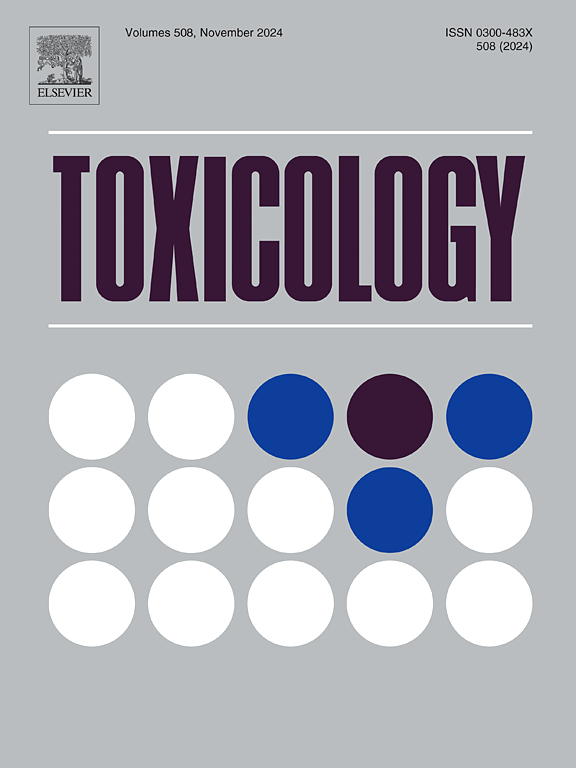Effects of cigarette smoke extract on surfactant production in ATII-like cells, involvement of oxidative stress and autophagy
IF 4.6
3区 医学
Q1 PHARMACOLOGY & PHARMACY
引用次数: 0
Abstract
Surfactant plays an essential role in pulmonary physiology by reducing surface tension, preventing alveolar collapse, and regulating immune responses in the lung. The composition and function of surfactant can be modified by environmental pollutants. Among these, cigarette smoke is a leading cause of respiratory and cardiovascular diseases. However, the impact of cigarette smoke on surfactant composition and function is still poorly understood. This study evaluated the effects of cigarette smoke extract (CSE) on surfactant production in a differentiated cell model (A549/ATII-like). Specifically, we evaluated the effects of CSE on multilamellar bodies (MLBs) involved in surfactant synthesis and storage, lipid production and secretion, surface tension, and the expression of the surfactant proteins SP-B and SP-C. Since autophagy is involved in MLBs maturation, the expression of SQSTM1/p62 and of the phosphorylated protein pATG-16L1S278 was evaluated to assess the effect of CSE exposure on the induction of the early stages of the autophagic process. Our results demonstrated that CSE exposure affects the expression of surfactant components in A549/ATII-like cells, inducing an increase in the surface tension at the air-water interface, possibly via oxidative stress and the alteration of autophagy.
香烟烟雾提取物对atii样细胞表面活性剂生成、氧化应激和自噬的影响
表面活性剂通过降低肺表面张力、防止肺泡塌陷、调节肺免疫反应等在肺生理中起重要作用。表面活性剂的组成和功能可受环境污染物的影响。其中,吸烟是导致呼吸系统和心血管疾病的主要原因。然而,香烟烟雾对表面活性剂组成和功能的影响仍然知之甚少。本研究评估了香烟烟雾提取物(CSE)对分化细胞模型(A549/ atii样)表面活性剂生成的影响。具体来说,我们评估了CSE对参与表面活性剂合成和储存、脂质产生和分泌、表面张力以及表面活性剂蛋白SP-B和SP-C表达的多层体(mlb)的影响。由于自噬参与了mlb的成熟,因此我们评估了SQSTM1/p62和磷酸化蛋白pATG-16L1S278的表达,以评估CSE暴露对诱导自噬过程早期阶段的影响。我们的研究结果表明,CSE暴露会影响A549/ atii样细胞中表面活性剂成分的表达,诱导空气-水界面表面张力的增加,可能是通过氧化应激和自噬的改变。
本文章由计算机程序翻译,如有差异,请以英文原文为准。
求助全文
约1分钟内获得全文
求助全文
来源期刊

Toxicology
医学-毒理学
CiteScore
7.80
自引率
4.40%
发文量
222
审稿时长
23 days
期刊介绍:
Toxicology is an international, peer-reviewed journal that publishes only the highest quality original scientific research and critical reviews describing hypothesis-based investigations into mechanisms of toxicity associated with exposures to xenobiotic chemicals, particularly as it relates to human health. In this respect "mechanisms" is defined on both the macro (e.g. physiological, biological, kinetic, species, sex, etc.) and molecular (genomic, transcriptomic, metabolic, etc.) scale. Emphasis is placed on findings that identify novel hazards and that can be extrapolated to exposures and mechanisms that are relevant to estimating human risk. Toxicology also publishes brief communications, personal commentaries and opinion articles, as well as concise expert reviews on contemporary topics. All research and review articles published in Toxicology are subject to rigorous peer review. Authors are asked to contact the Editor-in-Chief prior to submitting review articles or commentaries for consideration for publication in Toxicology.
 求助内容:
求助内容: 应助结果提醒方式:
应助结果提醒方式:


